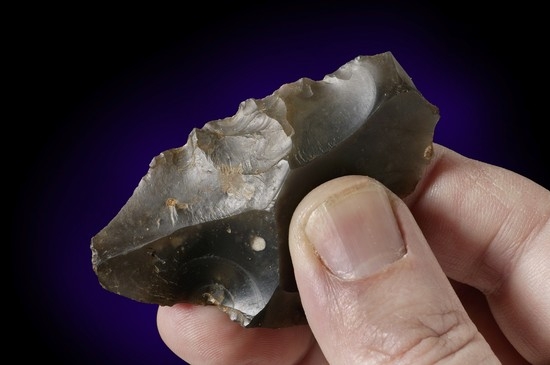The Top Five Human Evolution Discoveries from England
As many as four different species of hominids have lived in England, starting 800,000 years ago
/https://tf-cmsv2-smithsonianmag-media.s3.amazonaws.com/filer/torquay_man_2_311-hero.jpg)
The London Olympics are a great excuse to talk about England’s hominid history. Current evidence suggests that hominids reached Great Britain by at least 800,000 years ago, when the island was connected to mainland Europe. Since then, as many as four different hominid species have lived there. Coming and going in response to climate change, hominids probably fled England during extreme cold times when glacial ice covered the area. Sometime between 450,000 and 200,000 years ago, catastrophic flooding of a glacial lake eroded the land bridge connecting Great Britain and Europe and changed the drainage patterns of the region’s rivers. As a consequence, during warm periods when polar ice sheets melted and sea levels rose, the land bridge was transformed into a channel. This barrier probably explains why hominids are absent from the fossil record 180,000 to 60,000 years ago. It wasn’t until 12,000 years ago that the ancestors of modern Brits finally arrived on the island and stayed for good.
With that mini-review in mind, here are five of England’s most important human evolution discoveries.
Happisburgh (~780,000 years ago): This site, about a three-hour drive northeast of London, contains England’s earliest evidence of hominids. In 2010, archaeologists announced in the journal Nature that they had found flaked stone tools dating to between 990,000 and 780,000 years ago, when Great Britain was connected to mainland Europe. Fossils and climate data suggest the environment was much like modern southern Scandinavia, home to coniferous forests. No hominid fossils have been found there yet. But back in 2010, paleoanthropologist Chris Stringer of the Natural History Museum in London told Nature News that these hominids might have been members of the lesser-known species Homo antecessor.
Pakefield (700,000 years ago): Before the discoveries at Happisburgh, this was the oldest archaeological site in England. About an hour south of Happisburgh, the younger Pakefield find consists of more than 30 stone tools, and the environmental data suggests the hominids here experienced a warm, seasonally dry Mediterranean climate, researchers reported in Nature in 2005.

One of the stone tools from Pakefield. Image: Harry Taylor/Natural History Museum, London
Boxgrove (500,000 years ago): On England’s southern coast in the 1990s, anthropologists recovered what are the oldest hominid remains ever found in that country: a shin bone and two teeth dating to half a million years ago. Researchers think the bones belonged to Homo heidelbergensis, the species that many anthropologists consider to be the common ancestor of modern humans and Neanderthals. Stone tools and fossils at the site reveal the hominids butchered horses, deer and rhinos. Wolves, lions and hyenas also lived nearby (PDF).
Swanscombe (400,000 years ago): Between 1933 and 1955, amateur archaeologists discovered three separate pieces of the same female skull at a gravel quarry in Swanscombe. The skull is thought to be that of an early Neanderthal (although the skull’s age and species status have been questioned.) Less than an hour east of London, the Swanscombe site is now a historical park.
Kent’s Cavern (~41,000 years ago): In 2011, researchers reanalyzed a partial upper jaw and teeth discovered in 1927 in Kent’s Cavern in southwestern England. Originally thought to be 35,000 years old, the fossils are actually about 41,000 years old, the researchers reported in Nature. The older date makes these the oldest modern human (Homo sapiens) bones found in England and among the oldest ever found in Europe. Today, tourists can visit the cavern (and even get married there).
If this isn’t enough British hominid history for you, try reading Chris Stringer’s Homo britannicus.
/https://tf-cmsv2-smithsonianmag-media.s3.amazonaws.com/accounts/headshot/science-erin-wyman-240.jpg)
/https://tf-cmsv2-smithsonianmag-media.s3.amazonaws.com/accounts/headshot/science-erin-wyman-240.jpg)